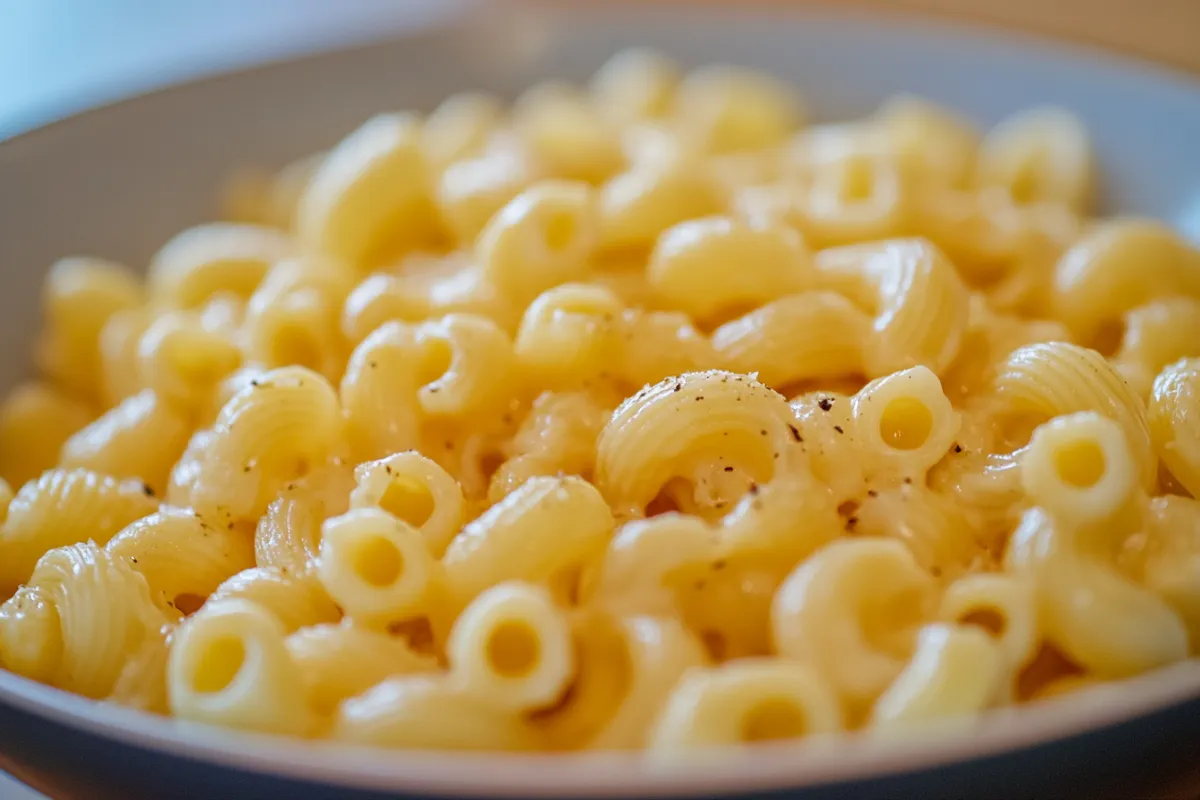Is Cavatappi the Same as Corkscrew?
When it comes to pasta, it’s not just the ingredients that matter—the shape of the pasta plays a crucial role in how it interacts with sauces and other components of a dish. Many people assume that cavatappi and corkscrew pasta are the same because of their similar spiral shapes, but they are not. These two pasta types, while visually alike, differ in their texture, ability to hold sauce, and the dishes they are best suited for. This guide will clarify the differences between cavatappi and other types of corkscrew pasta, helping you select the best pasta for your culinary needs.
Introduction
Pasta is a staple in Italian cuisine, beloved for its versatility and its ability to blend harmoniously with various sauces and ingredients. However, not all pasta shapes are created equal. The cavatappi and corkscrew pasta dilemma is a common one, with many home cooks and even some chefs mistakenly using them interchangeably. This article will delve into the subtle but important differences between these pasta shapes, explore their unique features, and provide insight into when to use one over the other.
Understanding the role of pasta shape in cooking is essential for crafting the perfect dish. By the end of this article, you will have a clear understanding of the difference between cavatappi and corkscrew pasta and be able to make informed decisions about which to use in your next recipe.
What is Cavatappi?
Cavatappi, derived from the Italian word for corkscrew, is a type of pasta that features a unique spiral shape with ridges along its surface. These ridges are designed to hold onto sauces, making cavatappi ideal for hearty, creamy dishes. Unlike some other types of corkscrew pasta, cavatappi also has a hollow center, which allows it to capture even more sauce and ingredients. This makes it perfect for dishes like macaroni and cheese or baked pasta casseroles.
The History of Cavatappi
The origins of cavatappi can be traced back to Southern Italy, where pasta-making traditions are deeply rooted in the culture. This pasta shape quickly gained popularity, not just in Italy but across the globe, particularly in regions where baked pasta dishes and creamy sauces were favored. In modern Italian-American cuisine, cavatappi has become a go-to choice for pasta lovers who want a shape that can hold up to heavy sauces and retain a firm texture, even when baked.
What is Corkscrew Pasta?
While cavatappi is a specific type of pasta, the term “corkscrew pasta” is a more general category that includes several different types of spiral-shaped pasta. The most common varieties of corkscrew pasta include fusilli and rotini. These pasta shapes also have spirals, but they differ from cavatappi in several key ways.
Types of Corkscrew Pasta
- Fusilli
Fusilli features tight spirals that are ideal for trapping lighter sauces. The smooth surface of fusilli makes it best suited for oil-based or tomato-based sauces. It’s also a popular choice for cold pasta salads, where the pasta’s structure helps it stay firm. - Rotini
Rotini is another type of corkscrew pasta, characterized by its looser spirals. Like fusilli, rotini is typically used in lighter dishes, but it has a slightly more open structure that can hold more sauce compared to fusilli.
Cavatappi vs. Corkscrew Pasta: Key Differences
At first glance, cavatappi and corkscrew pasta like fusilli and rotini might look similar, but their differences have significant impacts on how they perform in recipes.
- Shape and Texture
- Cavatappi has ridges and a hollow center, which allows it to hold onto thicker, heartier sauces. The spiral shape also gives it a robust structure that works well in baked dishes.
- Fusilli and rotini, on the other hand, have smoother surfaces, which makes them better suited for lighter sauces. Their spiral shapes are tighter than cavatappi, meaning they won’t capture as much sauce.
- Best Uses
- Cavatappi shines in dishes that feature rich, creamy sauces, such as macaroni and cheese, Alfredo sauce, or baked pasta casseroles. Its ridges and hollow center make it perfect for capturing and holding onto thick sauces.
- Fusilli and rotini are better suited for lighter dishes, such as pasta salads or dishes with oil-based sauces. Their smoother surfaces make them less effective at holding onto thicker sauces, but they excel in dishes where a lighter texture is desired.
Why Choosing the Right Pasta Matters
Pasta shape is more than just a visual element—it can significantly impact how a dish turns out. Choosing the wrong pasta for your sauce can result in a less-than-satisfying meal. Here’s why:
- Sauce Absorption: Thicker sauces cling better to pasta with ridges and hollows, like cavatappi. This is why cavatappi is often used in mac and cheese recipes or casseroles that require the pasta to hold onto a lot of sauce. Lighter sauces, however, don’t need as much surface area to cling to, making smoother pastas like fusilli and rotini ideal for these dishes.
- Texture: The ridged texture of cavatappi provides a more substantial mouthfeel, making it perfect for dishes where the pasta is a main feature. Fusilli and rotini, being smoother, offer a lighter texture, which works well in dishes where the pasta is more of a background player, such as in pasta salads or side dishes.
The Science of Pasta Shapes and Sauce Pairing
Pasta shape isn’t just about appearance; it plays a crucial role in how the pasta interacts with sauce. According to experts at Serious Eats, pasta shapes are designed with sauce absorption in mind. Each shape has its own strengths and weaknesses, which is why choosing the right pasta shape is so important. The ridges on cavatappi make it the perfect choice for heavy, creamy sauces because they give the sauce something to cling to. On the other hand, smooth pasta shapes like fusilli and rotini are better for lighter sauces that don’t need as much help sticking to the pasta.
How to Cook Cavatappi and Corkscrew Pasta
No matter which type of pasta you choose, there are a few universal tips that will help you achieve perfect results every time:
- Use Plenty of Water
Pasta needs a lot of water to cook evenly and prevent sticking. For best results, use at least 4 to 6 quarts of water for every pound of pasta. - Salt the Water
Adding salt to your pasta water is essential for flavor. As the pasta cooks, it absorbs the salty water, which enhances its flavor. For most types of pasta, you should use about 1 to 1.5 tablespoons of salt per 4 quarts of water. - Cook Al Dente
Cooking pasta al dente means cooking it until it is firm to the bite. This ensures that the pasta holds its shape and texture, especially when it’s used in baked dishes like casseroles. - Stir Frequently
To prevent pasta from clumping together, stir it frequently during the first few minutes of cooking. This is especially important for spiral-shaped pasta like cavatappi and rotini. - Save the Pasta Water
The starchy water left over after cooking pasta is a valuable ingredient. Adding a little pasta water to your sauce can help thicken it and make it cling better to the pasta.
Best Dishes for Cavatappi and Corkscrew Pasta
Now that we’ve explored the differences between cavatappi and other corkscrew pastas, let’s take a closer look at some of the best dishes to make with each type of pasta.
Cavatappi Recipes
- Mac and Cheese
Cavatappi is an excellent choice for mac and cheese because its ridges and hollow center hold onto the cheese sauce. For an extra indulgent version, try adding a mix of cheeses like cheddar, gouda, and parmesan. Baked mac and cheese dishes also benefit from the structure of cavatappi, as the pasta holds up well under the heat. - Baked Ziti
While traditional baked ziti calls for ziti pasta, cavatappi can be an excellent substitute. The pasta’s ridged surface and hollow center make it perfect for capturing all the flavors of the sauce and cheese. - Creamy Alfredo
Alfredo sauce, with its rich, creamy texture, pairs beautifully with cavatappi. The pasta’s ridges and hollow structure ensure that each bite is coated in sauce, making for a decadent meal.
Fusilli and Rotini Recipes
- Pasta Salad
Fusilli and rotini are commonly used in pasta salads because their spiral shapes hold onto bits of vegetables, cheese, and other ingredients. These pasta shapes also stay firm when served cold, making them ideal for chilled dishes. - Pesto Pasta
Rotini is a great choice for pesto pasta because its spiral shape helps capture the pesto sauce. The looser spirals of rotini provide just the right amount of surface area for the sauce to cling to without overwhelming the dish. - Tomato Basil Pasta
A simple tomato and basil sauce works wonderfully with fusilli. The smooth surface of fusilli lets the fresh tomato flavor shine without being overshadowed by the pasta.
Internal Linking Opportunities
When writing about cavatappi and corkscrew pasta, it’s important to use internal links to guide readers to other relevant content on your site. Here are a few internal linking opportunities based on the content at Lolyta Recipes:
- Closest Noodle to Cavatappi
Link to your guide on similar pasta types with the anchor text “Choosing the best pasta substitute for cavatappi.” This helps readers find alternatives when they can’t find cavatappi at their local store. - Cavatappi vs. Macaroni
In your discussion of pasta comparisons, link to your article on the differences between cavatappi and macaroni using the anchor text “Differences between cavatappi and macaroni.” - Cavatappi Pasta Recipes
As you discuss recipe ideas, direct readers to your curated collection of cavatappi recipes using the anchor text “Explore the best recipes using cavatappi pasta.”
FAQs About Cavatappi and Corkscrew Pasta
Here are some frequently asked questions (FAQs) to further clarify the differences between cavatappi and corkscrew pasta:
Is Cavatappi a Type of Corkscrew Pasta?
Yes, cavatappi is technically a type of corkscrew pasta, but it is distinct in its ridged texture and hollow center, which make it ideal for holding onto thicker sauces.
Can I Substitute Fusilli or Rotini for Cavatappi?
You can substitute fusilli or rotini for cavatappi in some dishes, but keep in mind that their smoother textures and lack of hollow centers won’t hold onto sauces as effectively.
What Pasta Holds More Sauce: Cavatappi or Fusilli?
Cavatappi holds more sauce due to its ridged surface and hollow center, making it better suited for creamy or thick sauces.
Is There a Gluten-Free Version of Cavatappi?
Yes, many brands now offer gluten-free cavatappi, so those with gluten sensitivities can still enjoy this versatile pasta.
What’s the Best Sauce to Pair with Cavatappi?
Rich, creamy sauces like Alfredo or cheese-based sauces work best with cavatappi because the pasta’s structure allows it to hold onto thicker sauces well.
Conclusion
In conclusion, while cavatappi and corkscrew pasta may look similar, they serve very different roles in the kitchen. When you’re making a dish with a hearty, thick sauce, cavatappi is the better choice. Its ridged texture and hollow center allow it to hold onto creamy sauces in ways that smoother corkscrew pastas like fusilli and rotini cannot. On the other hand, fusilli and rotini are better suited for lighter dishes, such as pasta salads or simple tomato-based sauces.

